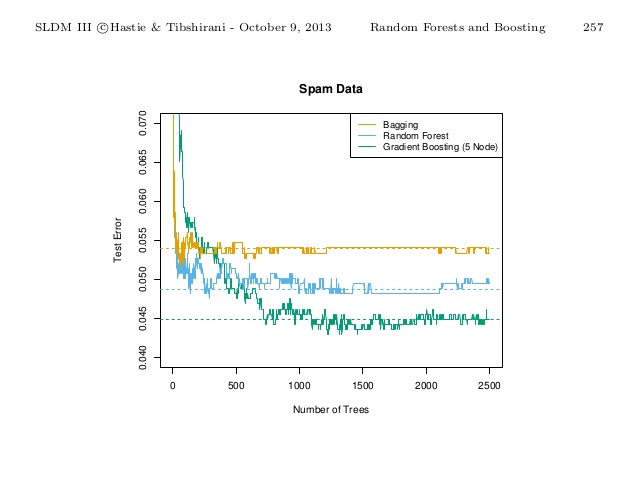Gradient boosted trees: Better than random forest?
Friday, February 23, 20181 mins read
Does gradient boosted trees generally perform better than random forest? Let’s see that. But, first what are these methods? Random forest and boosting are ensemble methods, proved to generally perform better than than basic algorithms.
Let’s start with bagging, an ensemble of decision trees. Random forest is an improvement over bagging. It reduces variance. Random forest build trees in parallel, while in boosting, trees are built sequentially i.e. each tree is grown using information from previously grown trees unlike in bagging where we create multiple copies of original training data and fit separate decision tree on each. That’s why it generally performs better than random forest.
One drawback of gradient boosted trees is that they have a number of hyperparameters to tune, while random forest is practically tuning-free (has only one hyperparameter i.e. number of features to randomly select from set of features). Though both random forests and boosting trees are prone to overfitting, boosting models are more prone.
Random forest build treees in parallel and thus are fast and also efficient. Parallelism can also be achieved in boosted trees. XGBoost1, a gradient boosting library, is quite famous on kaggle2 for its better results. It provides a parallel tree boosting (also known as GBDT, GBM).

A research paper in 2015 proposes another ensemble method, Randomer forest3, claiming to outperform other methods.
The conclusion is that use gradient boosting with proper parameter tuning. It will almost always beat random forest.
References: